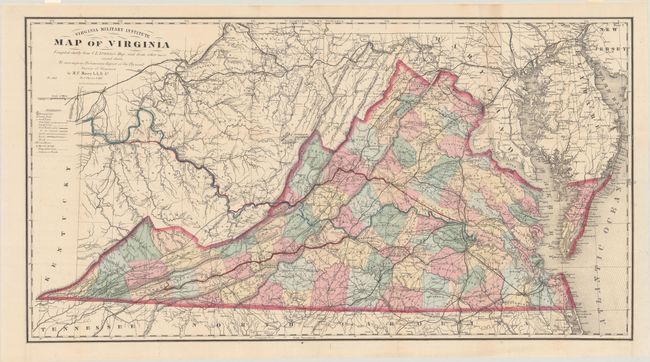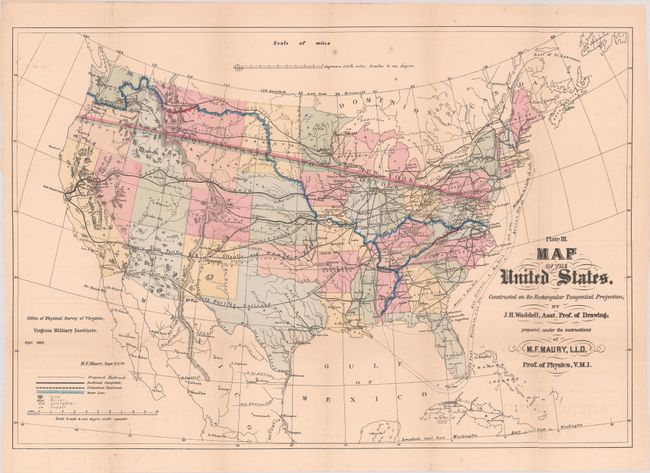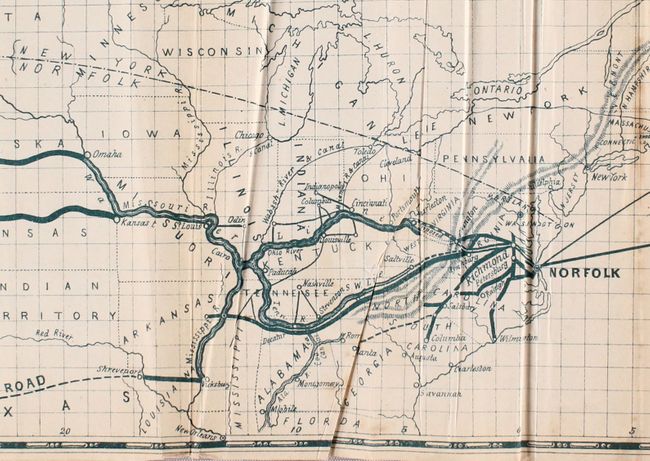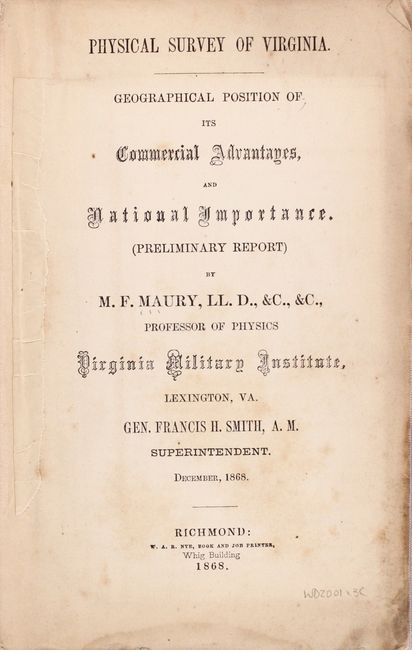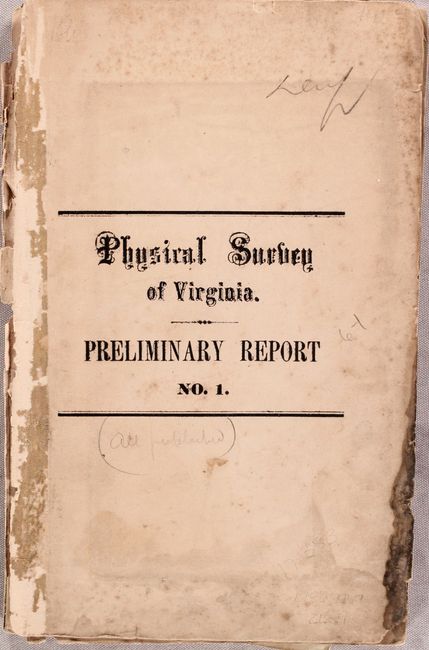Catalog Archive


Auction 180, Lot 303
Includes the Third Edition of the Bucholtz-Ludwig Map of 1858 in Fine Condition
"Virginia Military Institute Map of Virginia [with] Physical Survey of Virginia. Geographical Position of Its Commercial Advantages, and National Importance. (Preliminary Report)", Maury, M. F.
Subject: Virginia, Civil War Reconstruction
Period: 1868 (published)
Publication:
Color: Hand Color
Size:
34.9 x 18.6 inches
88.6 x 47.2 cm
Download High Resolution Image
(or just click on image to launch the Zoom viewer)
(or just click on image to launch the Zoom viewer)
